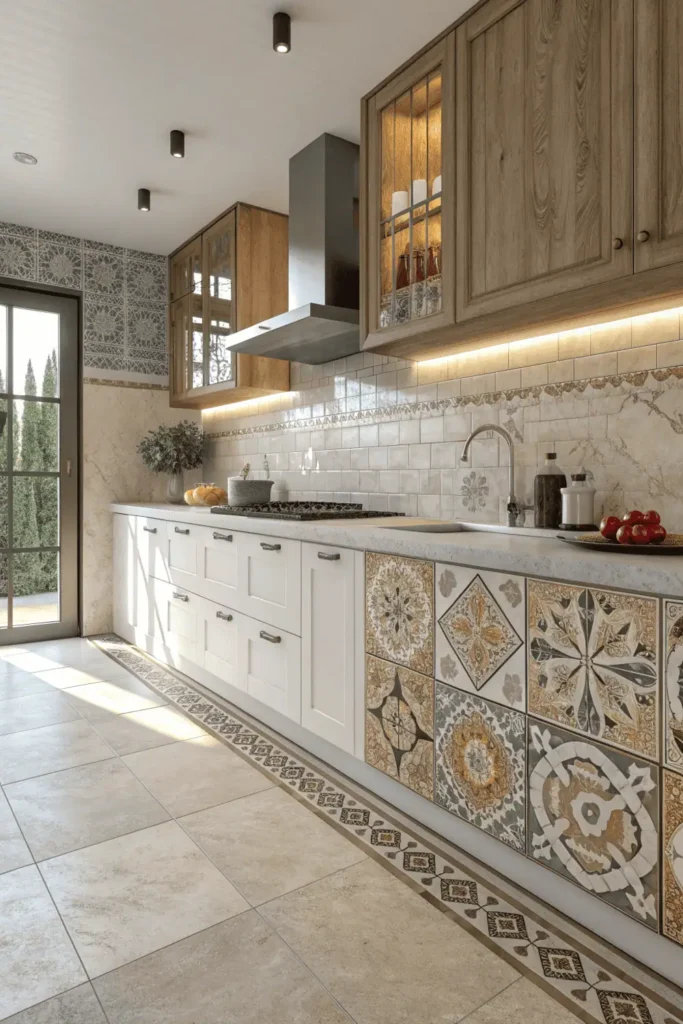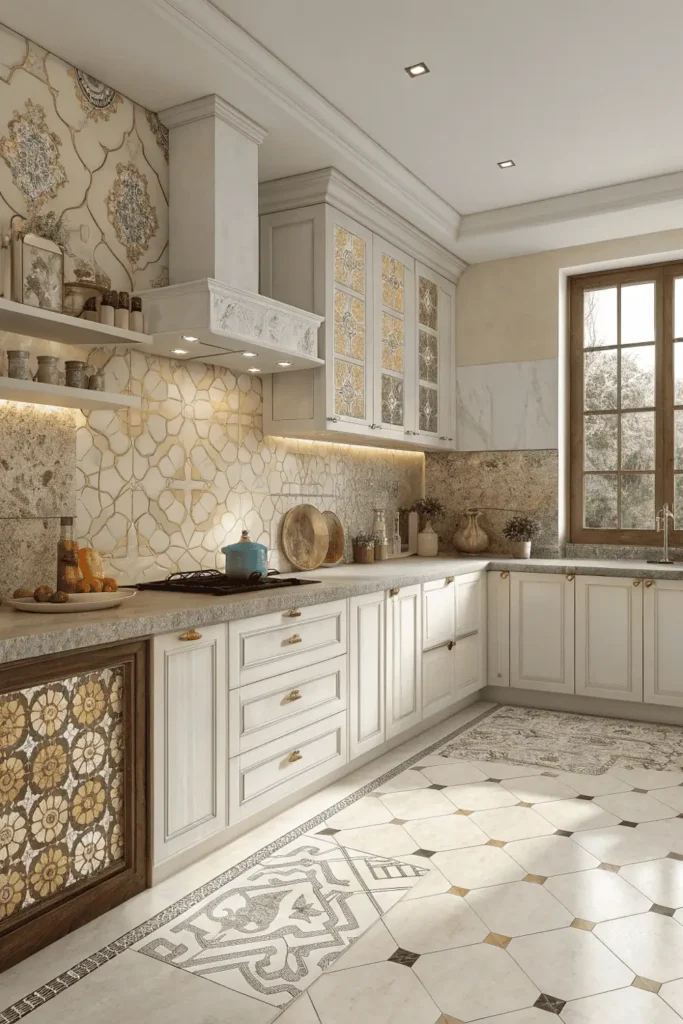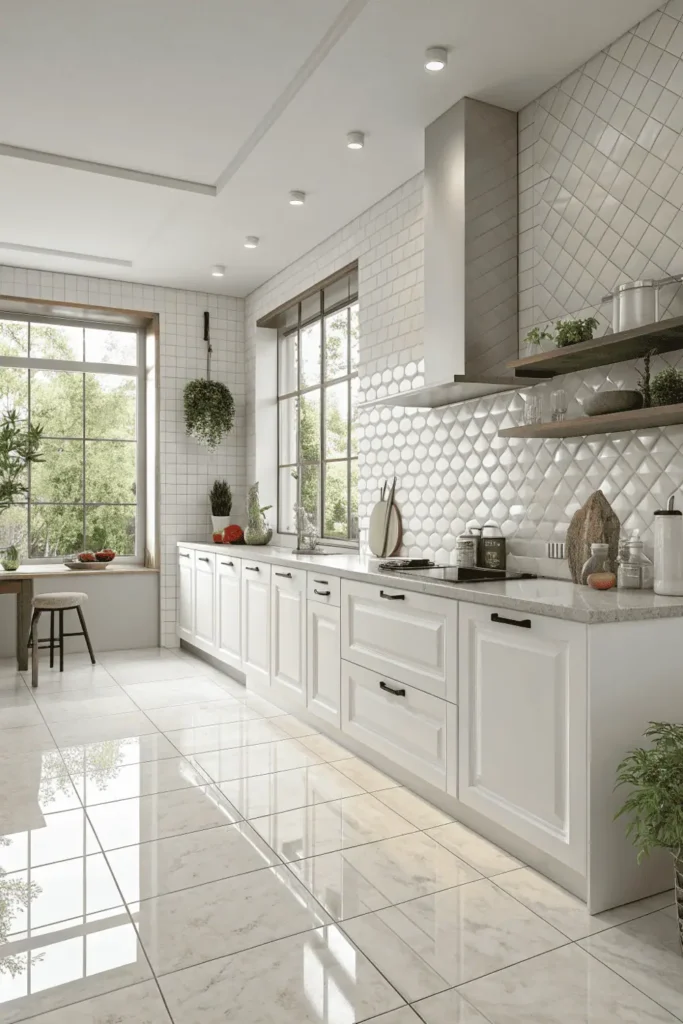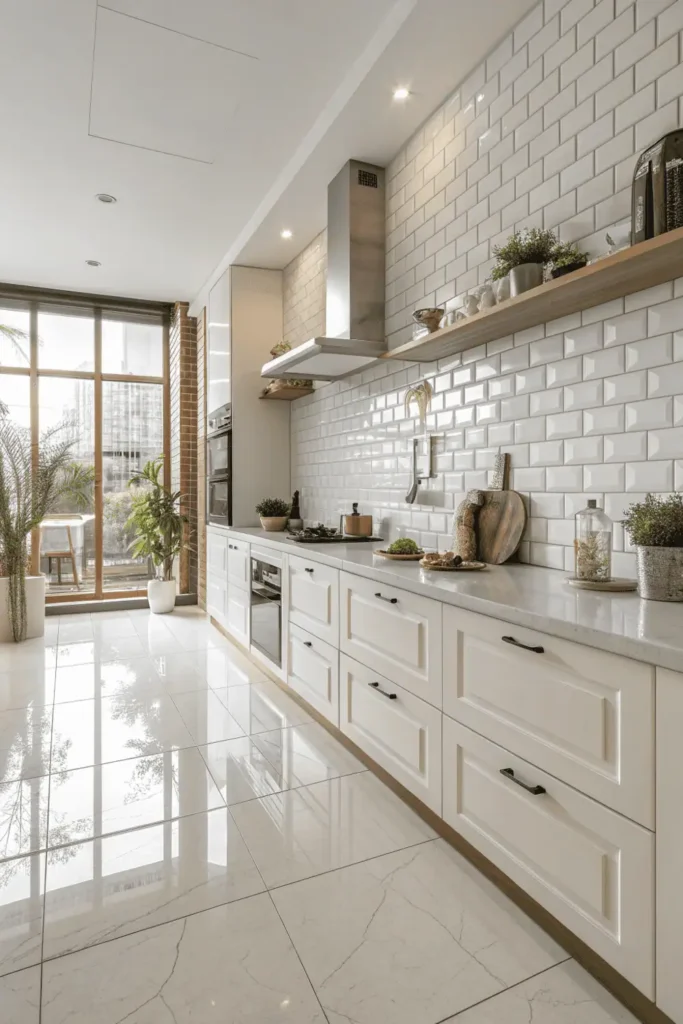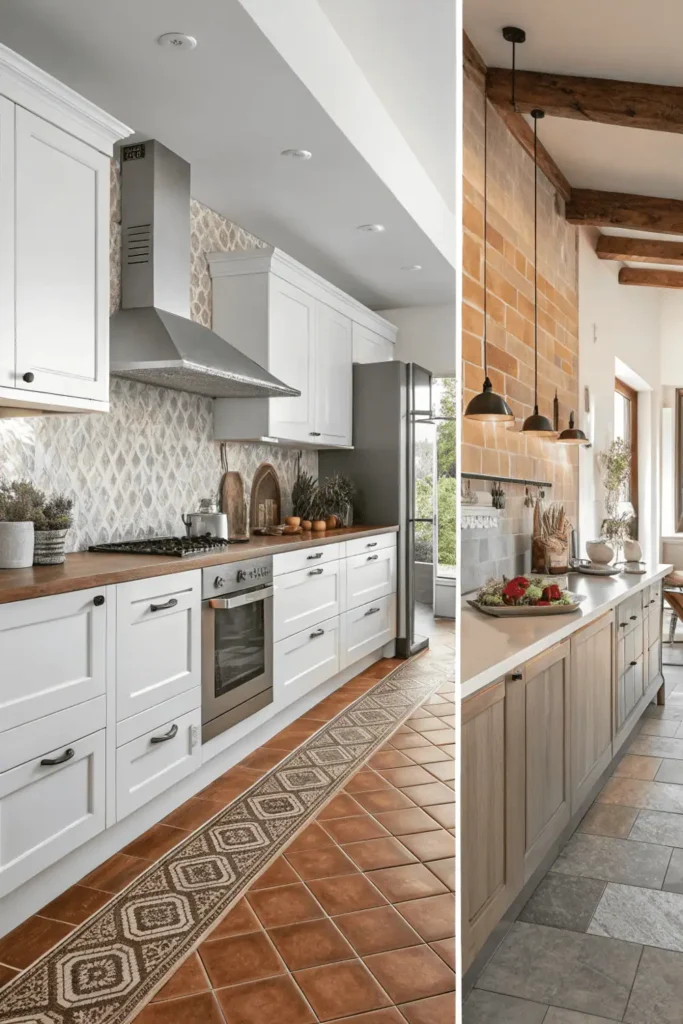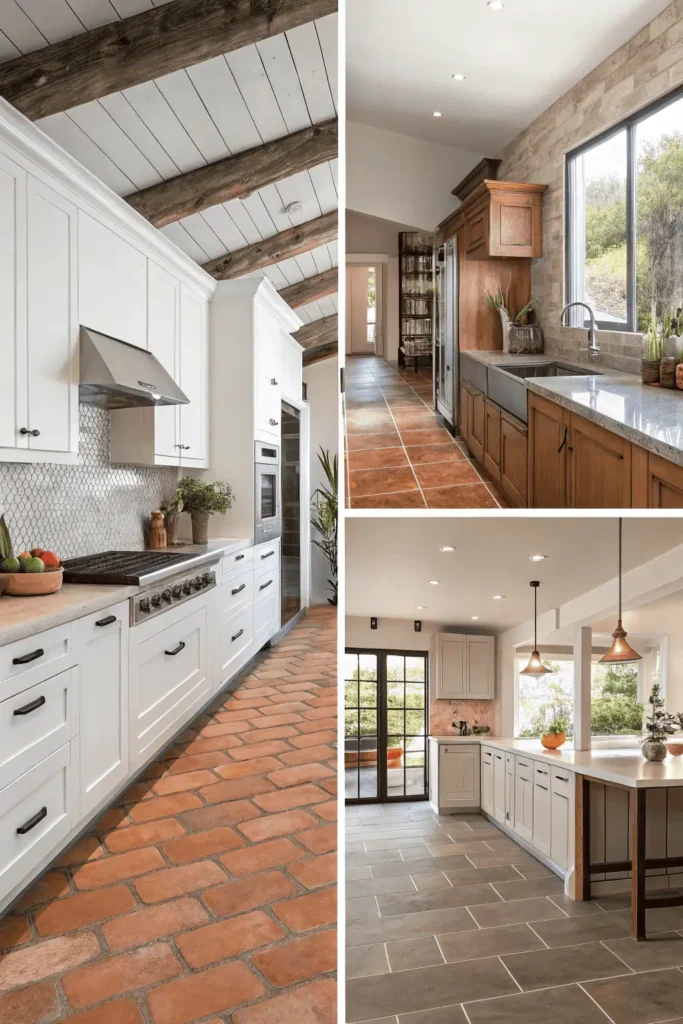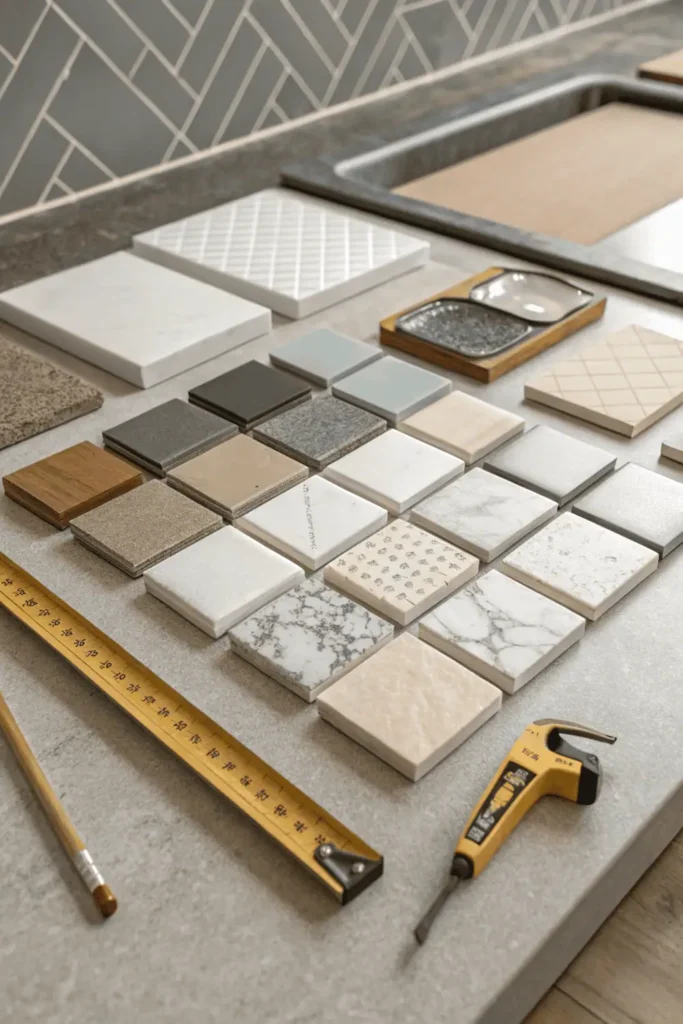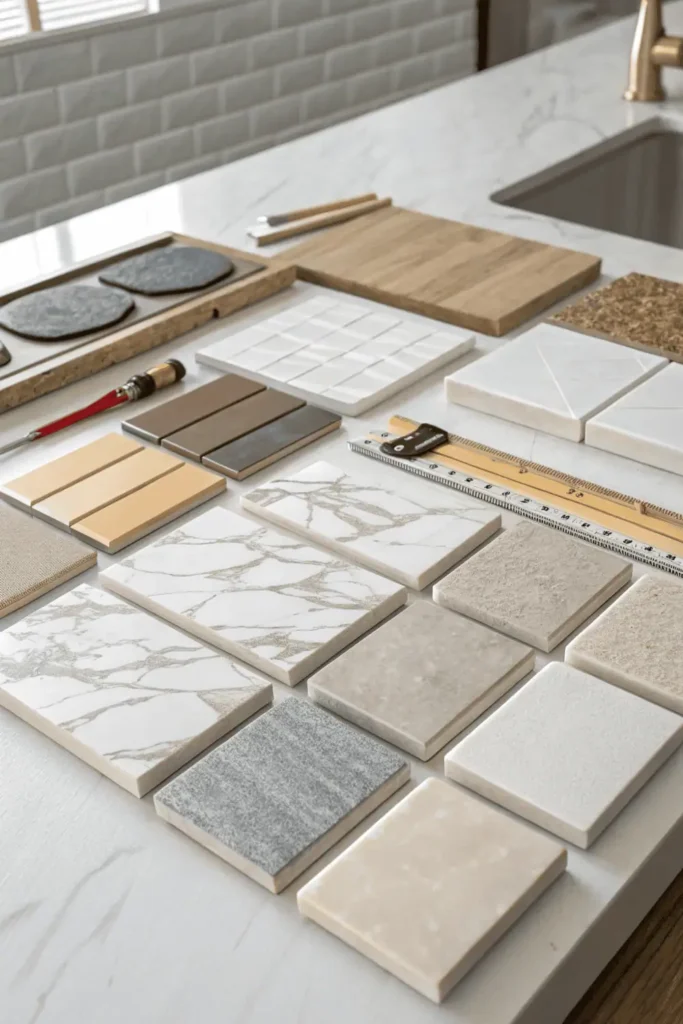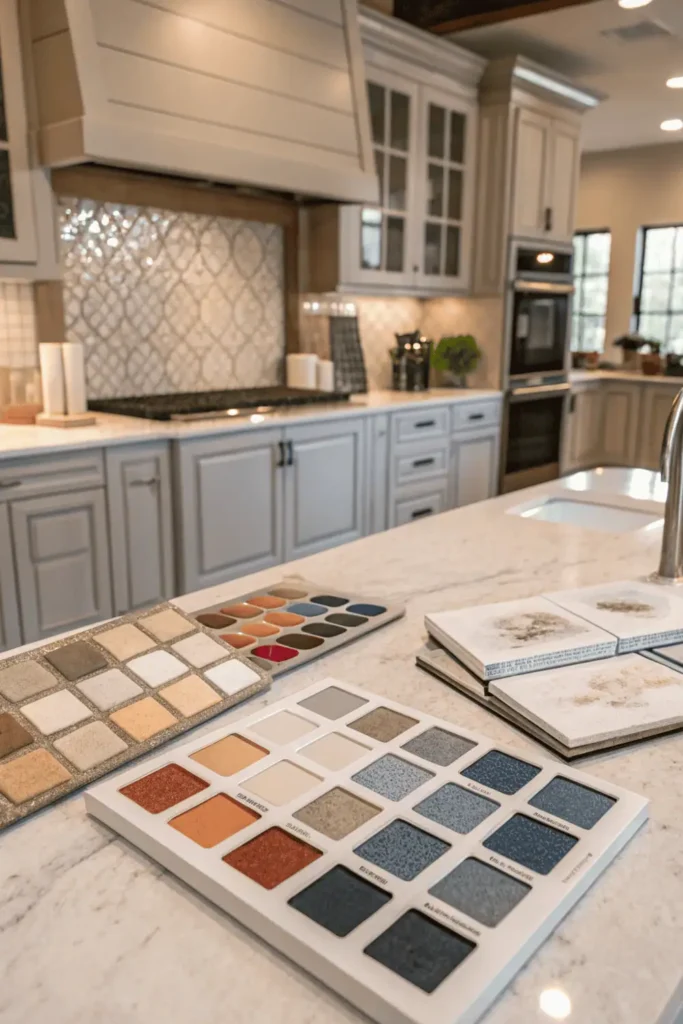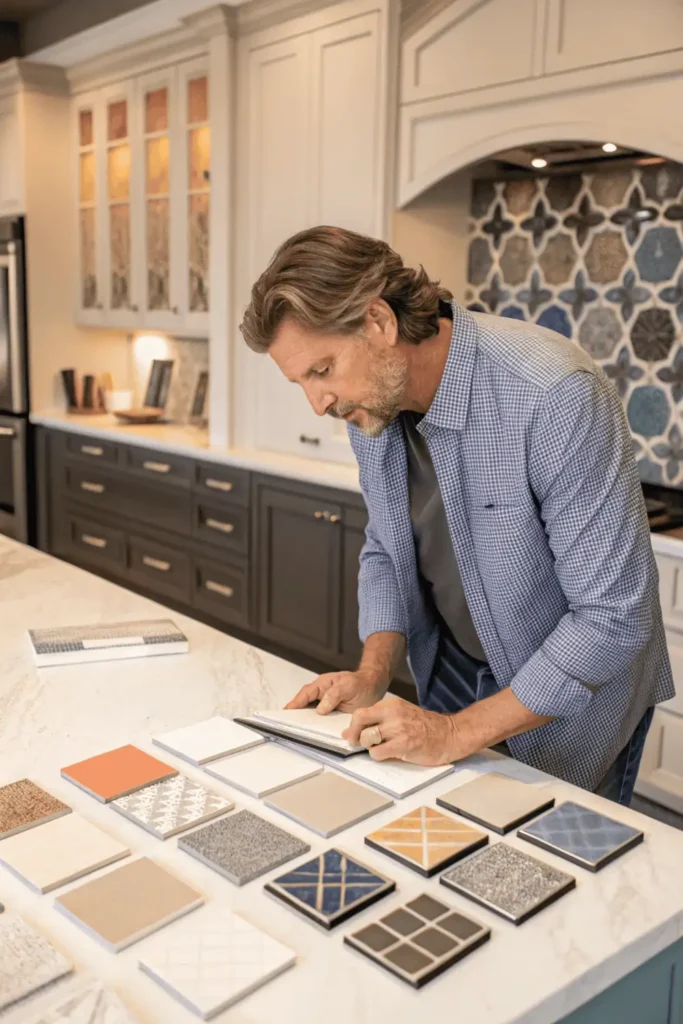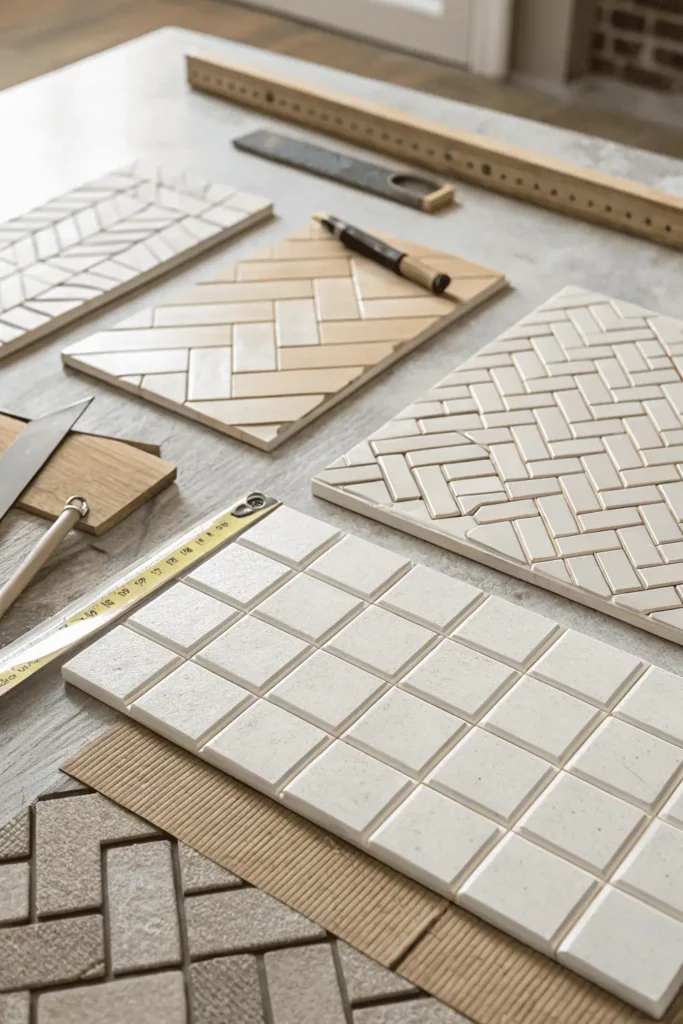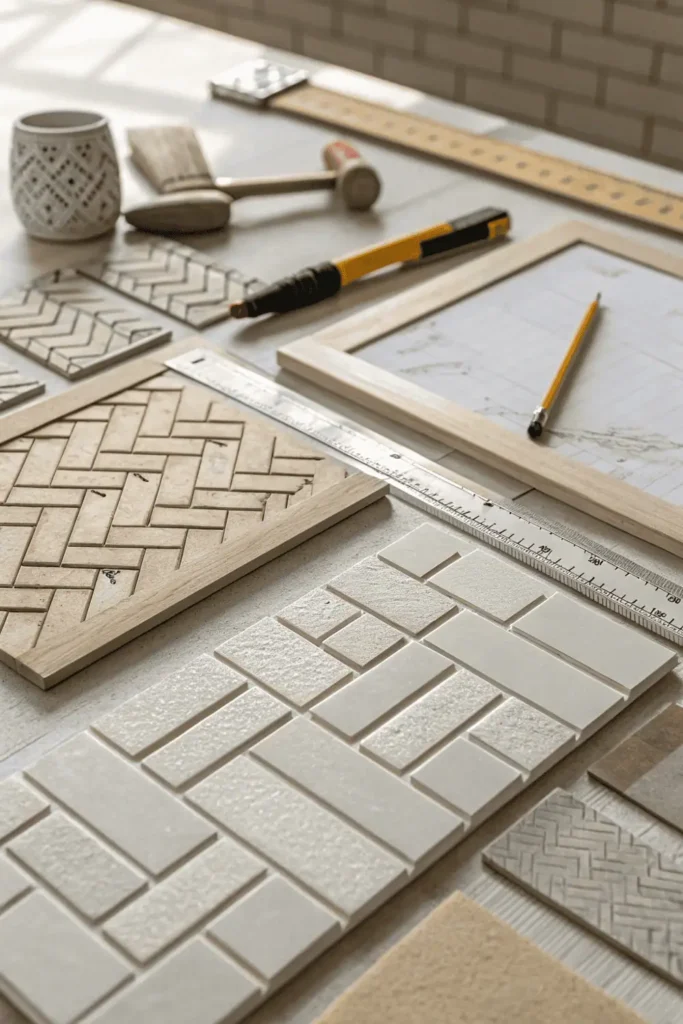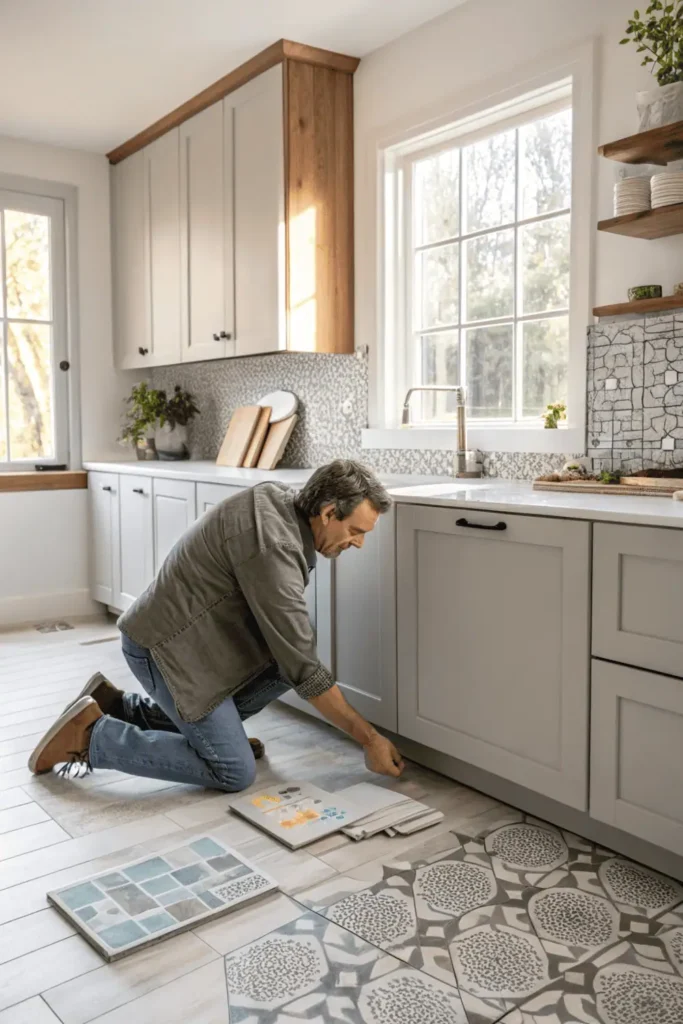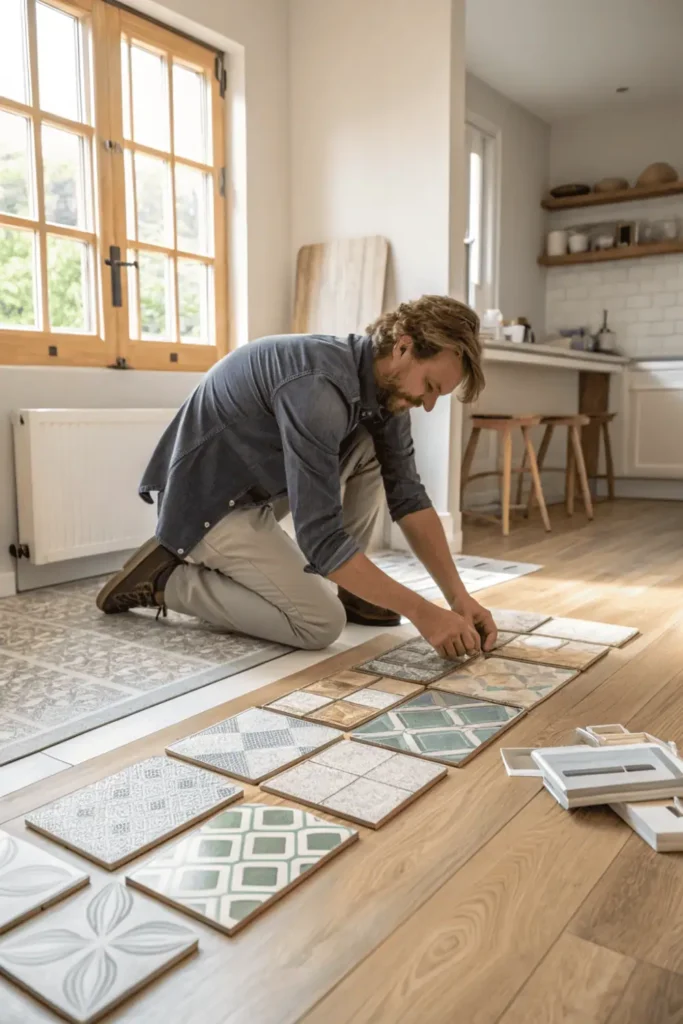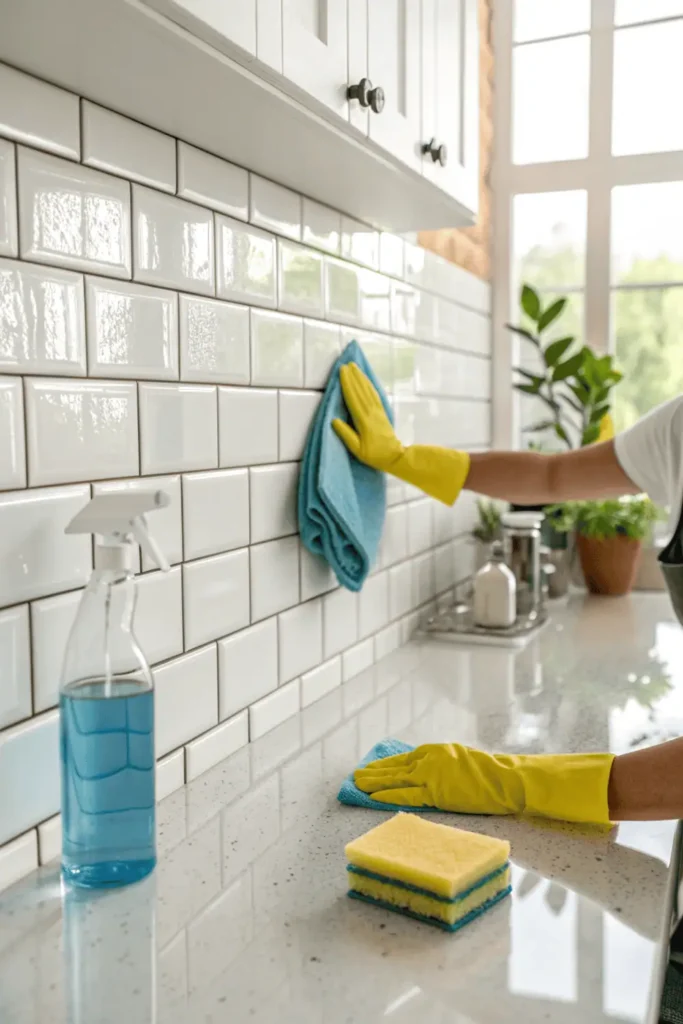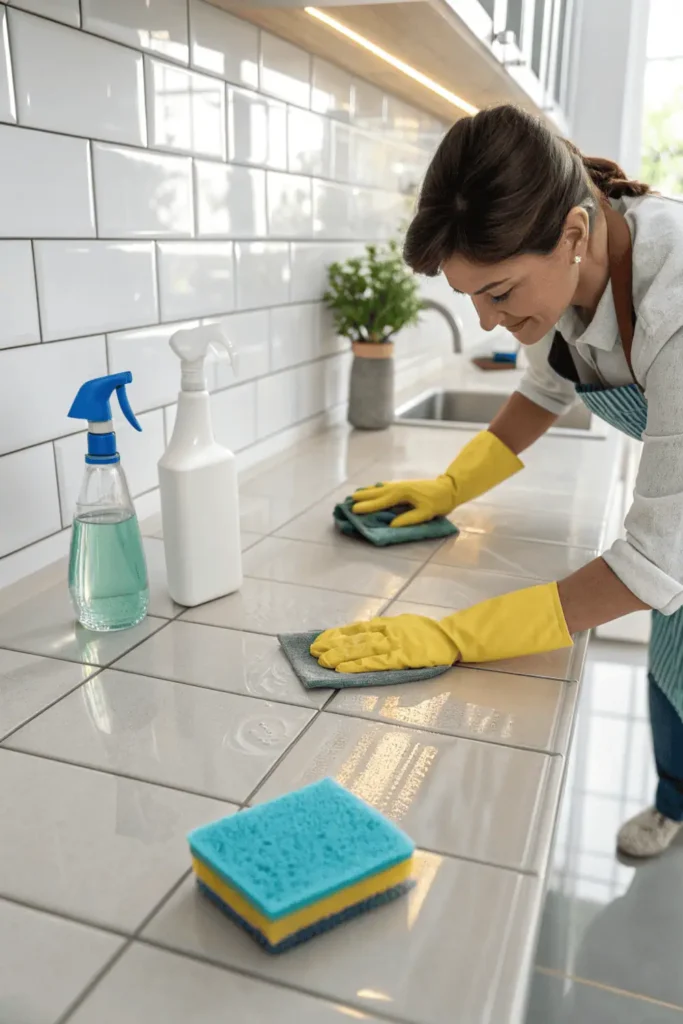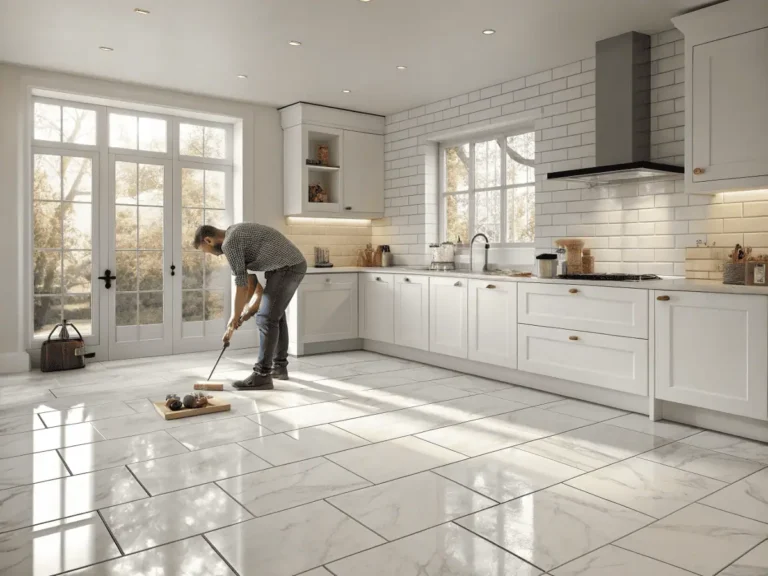Best Kitchen Tile Design Ideas to Transform Your Cooking Space
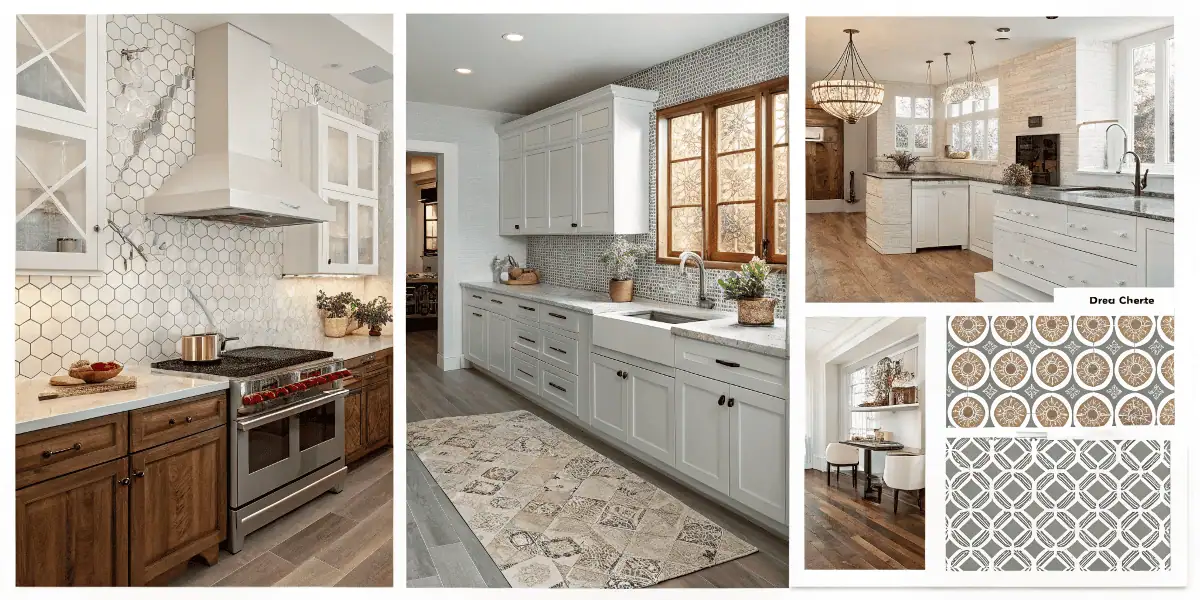
A beautiful kitchen starts from the ground up — and that’s where the magic of kitchen tiles comes in. The best kitchen tile design ideas don’t just enhance your home’s style; they create a space that’s practical, durable, and easy to maintain. Whether you’re dreaming of a sleek modern kitchen or a warm, rustic one, the right tile design can completely transform the heart of your home. This guide will help you understand how to choose, design, and maintain your kitchen tiles with confidence and creativity.
What is Kitchen Tile Design?
Kitchen tile design refers to the creative use of tiles on your kitchen’s floors, walls, and backsplashes to enhance both aesthetics and functionality. Tiles come in various materials—ceramic, porcelain, marble, glass, and even natural stone—each bringing a different texture, tone, and style to your space. A thoughtful kitchen tile design balances durability, cleanliness, and beauty, helping you create a cooking space that feels cohesive and inviting.
Tiles also act as a visual anchor in your kitchen, defining zones, highlighting features like countertops, and protecting walls from spills and splashes. From patterned Moroccan tiles to minimal subway designs, the right choice adds personality and purpose to every inch of your kitchen.
Why Kitchen Tile Design Is Important
A well-planned kitchen tile design is more than just decoration—it’s a functional investment.
✅ Durability: High-quality tiles resist heat, moisture, and heavy foot traffic.
???? Easy Maintenance: Tiles are simple to clean, making them perfect for busy kitchens.
???? Aesthetic Appeal: Creative patterns and textures can reflect your personal style.
⚙️ Versatility: Tiles fit well in various spaces—floors, walls, islands, and backsplashes.
???? Value Boost: A well-designed tiled kitchen increases home value and appeal.
When chosen wisely, your kitchen tiles blend beauty and practicality—enhancing both comfort and cooking experience.
Step-by-Step Guide: How to Choose the Best Kitchen Tile Design
1. Identify Your Kitchen Style
Start by defining your kitchen’s theme—modern, farmhouse, minimalist, or traditional. Each style pairs well with certain tile types.
- Modern kitchens look great with glossy porcelain or geometric patterns.
- Rustic spaces pair beautifully with terracotta or matte stone tiles.
- Minimalist designs benefit from neutral tones and clean lines.
2. Choose the Right Material
Here’s a quick comparison table to help you decide:
| Tile Material | Best For | Key Features | Maintenance Level |
|---|---|---|---|
| Ceramic | Floors & Walls | Affordable, water-resistant | Easy |
| Porcelain | High-traffic floors | Dense, durable, stylish | Easy |
| Marble | Luxury kitchens | Elegant, natural veining | Medium |
| Glass | Backsplashes | Reflective, brightens space | Easy |
| Granite/Stone | Rustic look | Strong, natural texture | Moderate |
3. Pick the Perfect Color Palette
The color of your tiles sets the tone for your kitchen.
✅ Light tones like beige, white, or pastel gray make small kitchens look spacious.
✅ Dark shades such as charcoal or navy add depth and luxury.
✅ Neutral tones pair beautifully with wood cabinets or marble countertops.
4. Focus on Layout and Pattern
The layout can dramatically change the visual flow:
- Subway pattern: Clean and timeless.
- Herringbone: Adds visual movement.
- Basketweave or diamond: Perfect for classic or artistic flair.
???? Tip: Experiment with grout color! Contrasting grout makes tiles pop, while matching tones create a seamless finish.
5. Test Before You Install
Always buy a few sample tiles before committing. Check how they look under your kitchen’s natural and artificial lighting. The right light can make or break the overall aesthetic.
Practical Tips for Maintaining Kitchen Tiles
✅ Clean regularly: Use a mild cleaner to prevent stains and grease buildup.
???? Seal natural stone tiles: This prevents water damage and discoloration.
⚠️ Avoid abrasive tools: They can scratch glossy or glass tiles.
???? Use soft microfiber cloths: Keeps tiles shiny and streak-free.
???? Check grout lines frequently: Re-grout or seal them annually for best results.
With a little care, your kitchen tiles will retain their charm for years.
Common Mistakes to Avoid
⚠️ Choosing tiles only for looks and not durability.
⚠️ Ignoring slip resistance—especially for kitchen floors.
⚠️ Using poor-quality grout or skipping sealant.
⚠️ Overcomplicating patterns in small spaces.
⚠️ Forgetting lighting—tile color may look different in different lights.
Top 5 Amazon-Recommended Kitchen Tile Products
1. Art3d Peel and Stick Wall Tile for Kitchen Backsplash
Easy-to-install vinyl mosaic tiles ideal for DIY kitchen makeovers. Heat and water-resistant.
???? Check Product Price
2. MSI Stone Porcelain Floor and Wall Tile
Elegant porcelain tiles that replicate natural stone for a luxury finish. Durable and easy to clean.
???? Check Product Price
3. Tic Tac Tiles Self-Adhesive Subway Tiles
Perfect for renters and budget-friendly kitchen updates. Realistic 3D finish with strong adhesive.
???? Check Product Price
4. Red Devil Tile Grout Squeeze Tube
An essential tool for easy grout repair or touch-up—mess-free and beginner-friendly.
???? Check Product Price
5. Rejuvenate Kitchen & Bath Grout Cleaner
Removes tough stains and restores grout brightness in minutes. Non-toxic and safe for tiles.
???? Check Product Price
Conclusion: Give Your Kitchen the Style It Deserves
The best kitchen tile design ideas combine creativity, practicality, and personal style. Whether you’re updating a backsplash or redoing your entire floor, your choice of tiles can turn an ordinary kitchen into an inspiring space where every meal feels special. Take your time, mix textures, and let your tiles reflect your personality. With the right choices, your kitchen will not only look stunning but also stay functional for years.
FAQs
1. What is the most durable tile for kitchen floors?
Porcelain tiles are the most durable option due to their density, water resistance, and ability to withstand heavy use.
2. Can I mix different tile designs in one kitchen?
Yes! Combining patterns or textures can add depth—just keep the color scheme consistent for balance.
3. How often should I reseal natural stone tiles?
Generally, every 12–18 months depending on traffic and usage. Regular sealing helps maintain shine and prevent stains.

